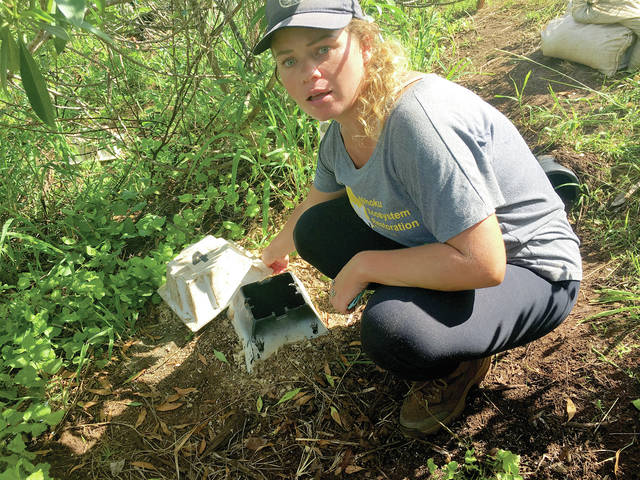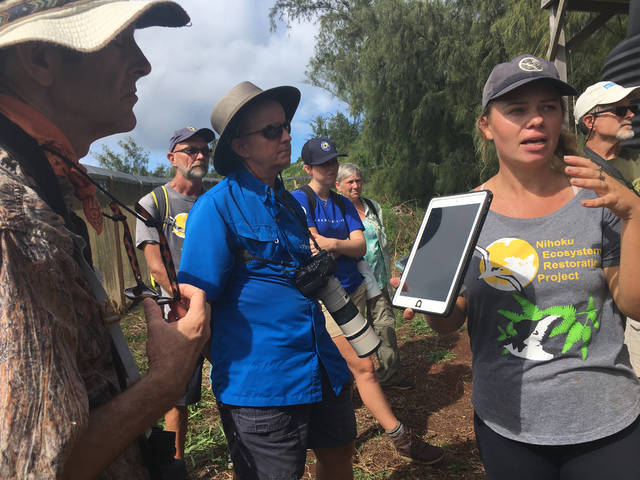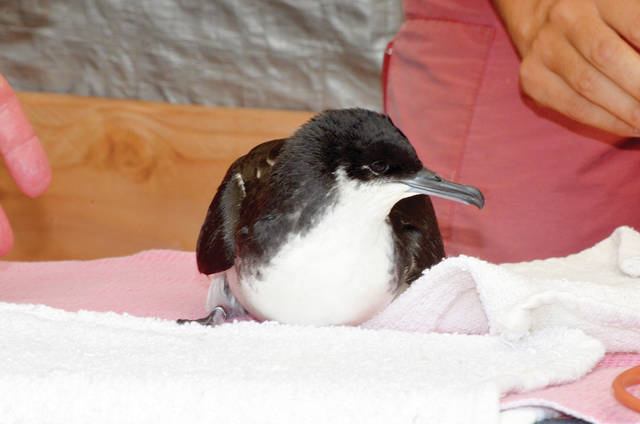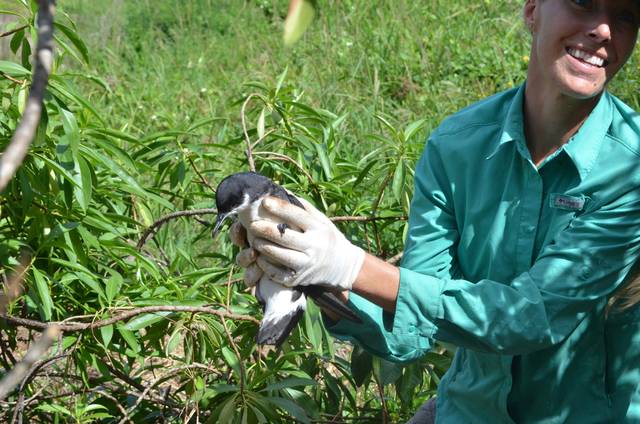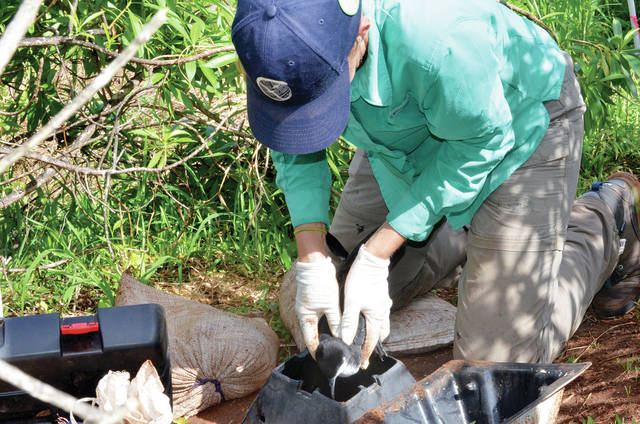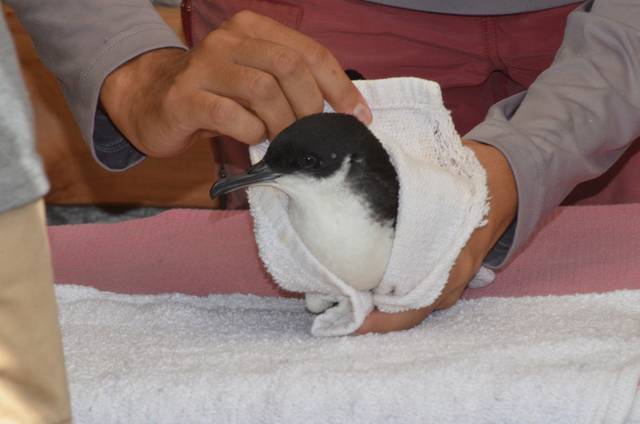KILAUEA — It was feeding time at the predator-proof nesting area on Kauai’s North Shore, but one of the Newell’s shearwater (‘a‘o) chicks didn’t show up for breakfast.
“Number 20 fledged,” said Caren Loebel-Fried, carrying a retrofitted black toolbox back up the hill from burrows where the chicks live, to the feeding and weighing station within the Kilauea Point National Wildlife Refuge on Friday morning.
That leaves six of the 20 ‘a‘o chicks, translocated from burrows in Kauai’s mountains, left to fledge from the refuge this season.
The rest have tested their wings and then left Nihoku, or Crater Hill, where a team of people from multiple agencies has worked since 2015 to restore a native ecosystem.
“So restoring the native plants goes hand in hand with what we’re doing for the birds here,” said Leilani Fowlke, Pacific Rim Conservation outreach coordinator.
She pointed out a section of Christmas berry bushes, which are invasive, along the fence line of the six-acre predator-proof nesting site.
“Those invasive species, the birds won’t think to nest there, so we’re planting native plants,” Fowlke said. “They usually dig their burrows in the root systems of these plants.”
Section by section, the site is being cleared of those invasive species by volunteers and staff with PRC, U.S. Fish and Wildlife Service, American Bird Conservancy, National Tropical Botanical Garden, Hawaii Department of Land and Natural Resources and Kauai Endangered Seabird Recovery Project, as well as community groups and individuals.
Invasive animals like mice and rats, cats and pigs have all been eradicated from the area. Ongoing monitoring and periodic traps keep them out — along with a more than 2,000-foot-long fence.
That $300,000 predator-proof fence was the first completed on Kauai; it was finished in September 2014 after a three-month building project.
It is more than 6 feet in height, with small chain-link mesh that will keep out something as small as a 2-day-old mouse. A hood over the top prevents cats from climbing over, and a skirt is sunk 6 inches into the ground.
It should last 15-25 years, and Fowlke said it’s holding up well in the conditions.
“It’s looking better than any of the other predator-proof fences we have,” she said.
Other predator-proof fences in Hawaii are located at Kaena Point Natural Area Reserve and James Campbell National Wildlife Refuge, both on Oahu.
The first translocation happened in 2015, when 10 Hawaiian petrels, or ‘ua‘u, were moved from mountain burrows to man-made burrows inside the fence. Nine of those 10 fledged.
The team brought the first round of Newell’s shearwater chicks to Nihoku in 2016, starting with 10 chicks; they translocated 10 Hawaiian petrel chicks that year as well.
Now, along with the six Newell’s shearwaters left at Nihoku, 20 Hawaiian petrel chicks have arrived at the reserve and are gaining weight and growing under the guiding hand of Pacific Rim Conservation’s Robby Kohley.
He and his team hand-feed the chicks a slurry of fish and squid once daily, with the amount specifically tailored for each bird as it grows.
While the number of shearwaters left at Nihoku is dwindling, the petrels arrived Wednesday.
And while Kohley and the team are feeding the birds, volunteer Thorne Silverberg follows the fence around Nihoku, trimming the weeds and making sure the birds stay safe.
“The petrels are a lot louder than the shearwaters,” he said as Kohley sent the last of the shearwaters back to its burrow with a full belly. “You can hear them making noise.”
•••
Jessica Else, environment reporter, can be reached at 245-0452 or at jelse@thegardenisland.com.
